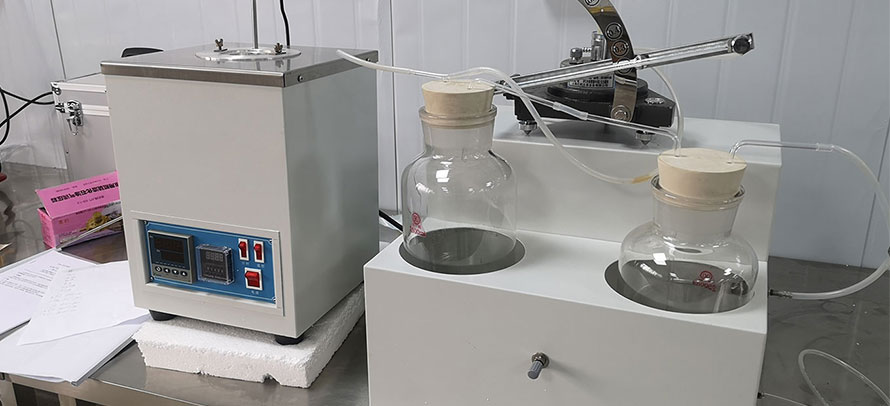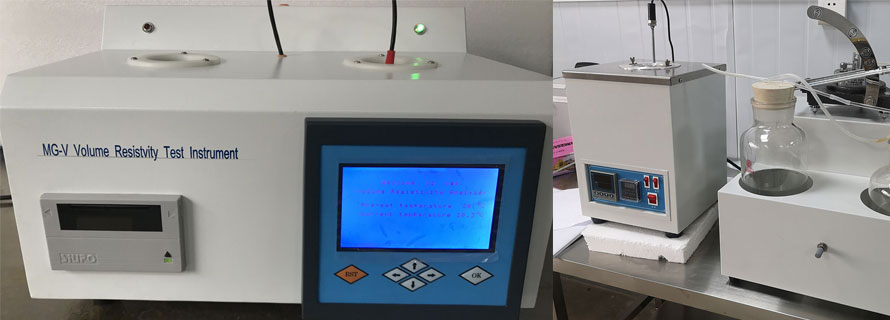BS EN 14214:2003 Automotive fuels - Fatty acid methyl esters (FAME) for diesel engines - Requirements and test methods
1 Scope
This European Standard specifies requirements and test methods for marketed and delivered fatty acid methyl esters (FAME) to be used either as automotive fuel for diesel engines at 100% concentration, or as an extender for automotive fuel for diesel engines in accordance with the requirements of EN 590. At 100% concentration it is applicable to fuel for use in diesel engine vehicles designed or subsequently adapted to run on 100% FAME.
NOTE For the purposes of this European Standard, the term "% (m/m)" is used to represent the mass fraction.
2 Normative references
This European Standard incorporates by dated or undated reference, provisions from other publications. These normative references are cited at the appropriate places in the text and the publications are listed hereafter. For dated references, subsequent amendments to or revisions of any of these publications apply to this European Standard only when incorporated in it by amendment or revision. For undated references the latest edition of the publication referred to applies.
EN 116:1997, Diesel and domestic heating fuels - Determination of cold filter plugging point
EN 590:1999, Automotive fuels - Diesel - Requirements and test methods
EN 12662:1998, Liquid petroleum products - Determination of contamination in middle distillates
EN 14103:2003, Fat and oil derivatives - Fatty Acid Methyl Esters (FAME) - Determination of ester and linolenic acid methyl ester contents
EN 14104:2003, Fat and oil derivatives - Fatty Acid Methyl Esters (FAME) - Determination of acid value
EN 14105:2003, Fat and oil derivatives - Fatty Acid Methyl Esters (FAME) - Determination of free and total glycerol and mono-, di- and triglyceride content –(Reference method)
EN 14106:2003, Fat and oil derivatives - Fatty Acid Methyl Esters (FAME) - Determination of free glycerol content
EN 14107:2003, Fat and oil derivatives - Fatty Acid Methyl Esters (FAME) - Determination of phosphorus content by inductively coupled plasma (ICP) emission spectrometry
EN 14108:2003, Fat and oil derivatives - Fatty Acid Methyl Esters (FAME) - Determination of sodium content by atomic absorption spectrometry
EN 14109:2003, Fat and oil derivatives - Fatty Acid Methyl Esters (FAME) - Determination of potassium content by atomic absorption spectrometry
EN 14110:2003, Fat and oil derivatives - Fatty Acid Methyl Esters (FAME) - Determination of methanol content
EN 14111:2003, Fat and oil derivatives - Fatty Acid Methyl Esters (FAME) - Determination of iodine value
EN 14112:2003, Fat and oil derivatives - Fatty Acid Methyl Esters (FAME) - Determination of oxidation stability (accelerated oxidation test).
prEN 14538:2002 Fat and oil derivatives - Fatty acid methyl esters (FAME) - Determination of Ca and Mg content by optical emission spectral analysis with inductively coupled plasma (ICP OES).
EN ISO 2160:1998, Petroleum products - Corrosiveness to copper - Copper strip test (ISO 2160:1998).
EN ISO 3104:1996, Petroleum products - Transparent and opaque liquids - Determination of kinematic viscosity and calculation of dynamic viscosity (ISO 3104:1994).
EN ISO 3104:1996/AC:1999, Petroleum products - Transparent and opaque liquids - Determination of kinematic viscosity and calculation of dynamic viscosity (ISO 3104:1994, including Cor. 1:1997)
EN ISO 3170, Petroleum liquids - Manual sampling.
EN ISO 3171:1999, Petroleum liquids - Automatic pipeline sampling (ISO 3171:1988).
EN ISO 3675:1998, Crude petroleum and liquid petroleum products - Laboratory determination of density - Hydrometer method (ISO 3675:1998).
prEN ISO 3679:2002, Determination of flash point - Rapid equilibrium closed cup method (ISO/DIS 3679:2002).
EN ISO 4259:1995, Petroleum products - Determination and application of precision data in relation to methods of test (ISO 4259:1992, including Cor. 1:1993).
EN ISO 5165:1998, Petroleum products - Diesel fuels - Determination of the ignition quality of diesel fuels - Cetane engine method (ISO 5165:1998).
EN ISO 10370:1995, Petroleum products - Determination of carbon residue - Micro method (ISO 10370:1993).
EN ISO 12185:1996/C1:2001, Crude petroleum and petroleum products - Determination of density - Oscillating U-tube method (ISO 12185:1996, including Cor. 1:2001).
EN ISO 12937:2000, Petroleum products - Determination of water - Coulometric Karl Fisher titration method (ISO 12937:2000).
EN ISO 13759:1996, Petroleum products - Determination of alkyl nitrate in diesel fuels - Spectrometric method (ISO 13759:1996).
prEN ISO 20846:2002, Petroleum products - Determination of the sulfur content of automative fuels - Energy-dispersive X-ray fluorescence spectrometry (ISO/DIS 20846:2002).
prEN ISO 20884:2002, Petroleum products - Determination of low sulfur content of automotive fuels - Wavelength-dispersive X-ray fluorescence spectrometry (ISO/DIS 20884:2002).
ISO 3987:1994, Petroleum products - Lubricating oils and additives - Determination of sulfated ash.
ASTM D 1160:1999, Distillation of Petroleum Products at Reduced Pressure.
3 Sampling
Samples shall be taken as described in EN ISO 3170 or EN ISO 3171 and/or in accordance with the requirements of national standards or regulations for the sampling of automotive diesel fuel. The national requirements shall be set out in a national annex to this European Standard, either in detail or by reference only.
In view of the sensitivity of some of the test methods referred to in this European Standard, particular attention shall be paid to compliance with any guidance on sampling containers, which is included in the test method standard.
4 Pump marking
Information to be marked on dispensing pumps used for delivering FAME diesel fuel, and the dimensions of the mark shall be in accordance with the requirements of national standards or regulations for the marking of pumps for automotive diesel fuel. Such requirements shall be set out in detail or shall be referred to by reference in a national annex to this European Standard.
5 Requirements and test methods
5.1 Dyes and markers
The use of dyes or markers is allowed.
5.2 Additives
In order to improve the performance quality, the use of additives is allowed. Suitable fuel additives without known harmful side effects are recommended in the appropriate amount, to help to avoid deterioration of driveability and emissions control durability. Other technical means with equivalent effect may also be used.
NOTE Deposit forming tendency test methods suitable for routine control purposes have not yet been identified and developed.
5.3 Generally applicable requirements and related test methods
5.3.1 When tested by the methods indicated in Table 1, fatty acid methyl esters (FAME) shall be in accordance with the limits specified in Table 1. The test methods listed in Table 1 have been shown to be applicable to fatty acid methyl esters in an interlaboratory test programme. Precision data from this programme are given in normative Annex A, where these were found to be different from the precision data given in the test methods for petroleum products.
5.3.2 In case of a need for identification of FAME, a recommended method based on separation and characterisation of fatty acid methyl esters by LC/GC is EN 14331.
5.3.3 In case of a need for a check upon FAME quality, iodine value of FAME may be calculated by the method presented in Annex B (normative), but this method does not constitute an alternative to the iodine value requirement of Table 1.
5.3.4 The limiting value for the carbon residue given in Table 1 is based on product prior to addition of ignition improver, if used. If a value exceeding the limit is obtained on finished fuel in the market, EN ISO 13759 shall be used as an indicator of the presence of a nitrate-containing compound. If an ignition improver is thus proved present, the limit value for the carbon residue of the product under test cannot be applied. The use of additives does not exempt the manufacturer from meeting the requirement of maximum 0,30 % (m/m) of carbon residue prior to addition of additives.
5.4 Climate dependent requirements and related test methods
5.4.1 For climate-dependent requirements options are given to allow for seasonal grades to be set nationally. The options are for temperate climates six CFPP (cold filter plugging point) grades and for arctic climates five different classes. Climate-dependent requirements are given in Table 2. Table 2 is divided into two sections, one for temperate climates (Table 2a) and one for arctic climates (Table 2b). When tested by the methods given in the Tables 2a and 2b, FAME "as fuel for diesel engines" shall be in accordance with the limits specified in these tables.
5.4.2 In a national annex to this European Standard each country shall detail requirements for a summer and a winter grade and may include (an) intermediate and/or regional grade(s) which shall be justified by national meteorological data.
5.5 Precision and dispute
5.5.1 All test methods referred to in this European Standard include a precision statement according to EN ISO 4259. In cases of dispute, the procedures described in EN ISO 4259 shall be used for resolving the dispute, and interpretation of the results based on the test method precision shall be used. However, the methods currently available for total contamination, ester content, triglyceride content, free glycerol and Group I metals (Na + K) do not meet the 2R requirement of EN ISO 4259 at the limit in Table 1.
5.5.2 In cases of dispute concerning density, EN ISO 3675 shall be used with the determination carried out at 15 °C.
In cases of dispute concerning free glycerol, EN 14105 shall be used.
5.5.3 For the determination of cetane number alternative methods may also be used in cases of dispute, provided that these methods originate from a recognized method series, and have a valid precision statement, derived in accordance with EN ISO 4259, which demonstrates precision at least equal to that of the referenced method. The test result, when using an alternative method, shall also have a demonstrable relationship to the result obtained when using the reference method.

